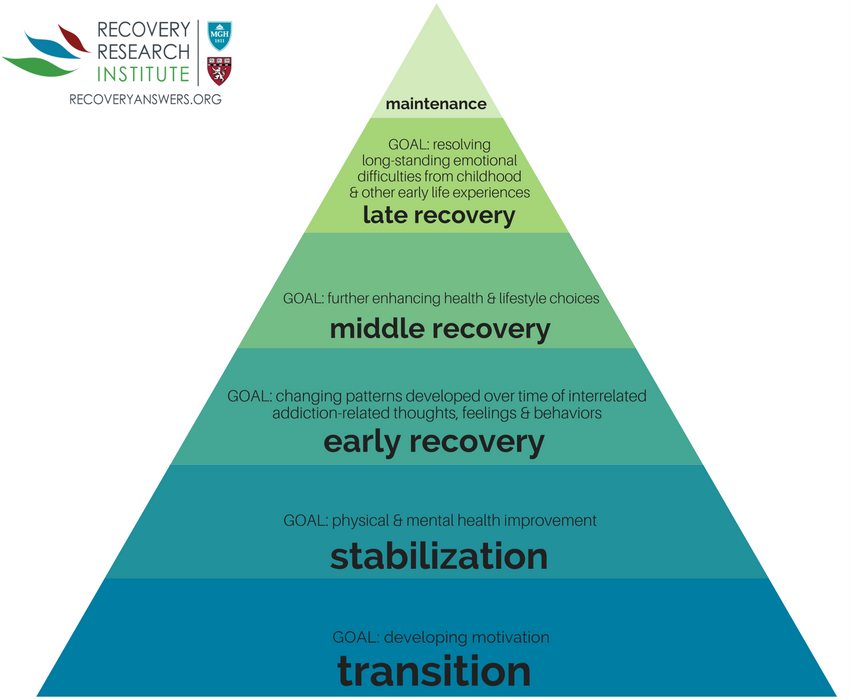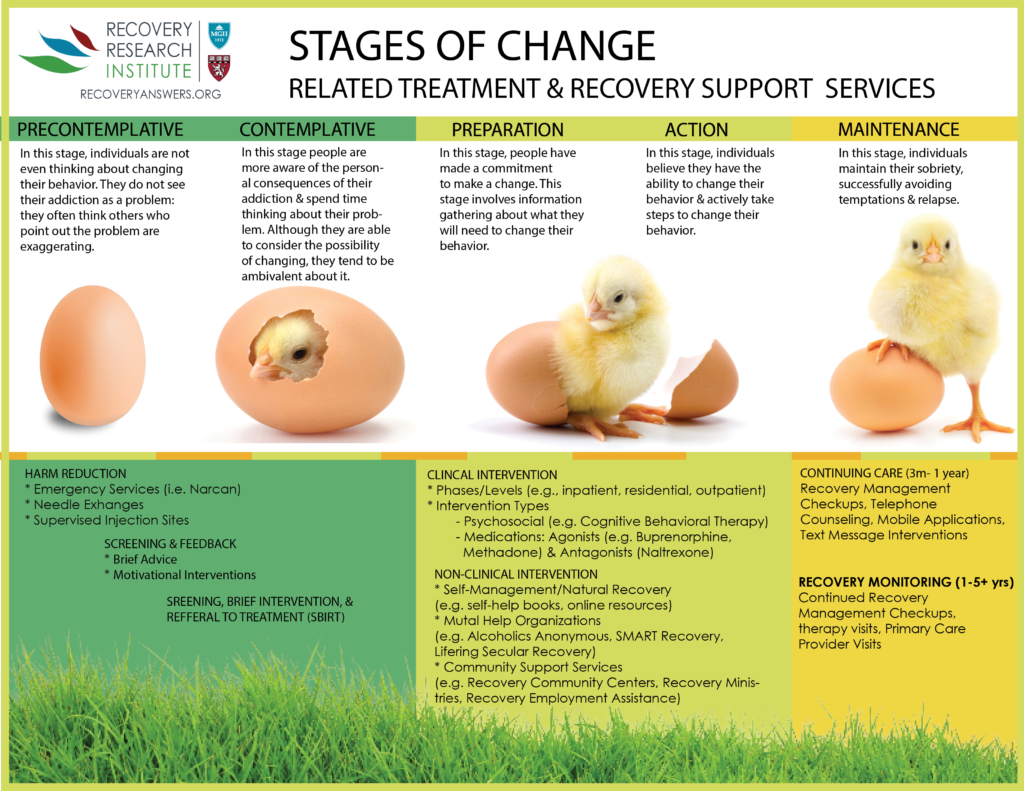Stages of Recovery


Recovery is a process of change through which individuals improve their health and wellness, live self-directed lives, and strive to reach their full potential.
“The following stages of recovery were modified from the
work of Kathleen R. O’Connell, R.N., M.P.H., Ph.D. the first four are
adapted from her book, Bruised by Life? Turn Life’s Wounds into
Gifts. The 5th stage was developed by CCAR Executive Director, Phil
Valentine after training several CCAR RCA’s. They are one framework
to illustrate the ongoing, progressive nature of recovery”
- Stage One
The first stage of recovery is referred to as Stabilization and normally occurs during the first year of recovery. Stabilization is defined as firmness of purpose and character.
Some of the tasks in Stage One include:
– Learning about addiction
– Staying clean and sober no matter what
– Physical detox and stabilization
– Learning to socialize in a group setting
– Learning to break the pattern of isolation
– Developing role models for healthy recovery
– Anxiety management
– Staying away from risky places, situations and people
– Developing self-responsibility
– Learning to ask for help and support - Stage Two
The second stage of recovery is referred to as Deepening and normally occurs during the second year of recovery. Deepening is defined as extending downward, inward or forward; richness; a deeper understanding.
Some of the tasks in Stage Two include:
– Identifying old behaviors that don’t feel right anymore
– Emotional detox
– Changes in verbal attitude, feeling and behavior
– Increase in the quality of physical health
– Increase in the ability to tolerate feelings
– Beginning to make distinctions between and among feeling states
– Increase commitment to working on recovery - Stage Three
- The third stage of recovery is referred to as Connectedness and normally occurs during years three to five of recovery. Connectedness is defined as joining together; to think of as related.
Some of the tasks in Stage Three include:
– The depth of joy and misery can be profound
– The need to go back and redo some earlier tasks in recovery
– Learning to avoid the creation of drama in one’s life
– The outer world of the person is beginning to reflect the inner world
– Connections are made to a wider circle of people both in and out of recovery
– There is an increase in honesty - Stage Four
The fourth stage of recovery is referred to as integration and normally occurs during years six to ten of recovery. Integration is defined as becoming whole.
Some of the tasks in Stage Four include:
– Relationships based on love rather than need
– Avoiding stuckness
– The automatic use of tools of recovery
– An ability to act on knowledge and insight and follow through
– Self-forgiveness
– Having fun and joy in life - Stage Five (developed by CCAR Executive Director, Phil Valentine)
The fifth stage of recovery is referred to as fulfillment and normally occurs after ten years of recovery.
Some of the tasks in Stage Fifth include:
– Discovering and following through on life purpose
– Living with an aura of peace/serenity
– Dramatic reduction in worry
– Acceptance
– High level of morality/integrity
– Confidence balanced with humility
– Embracing the concept of being both precious and insignificant at the same time
– Gratitude penetrates all actions
– Celebration